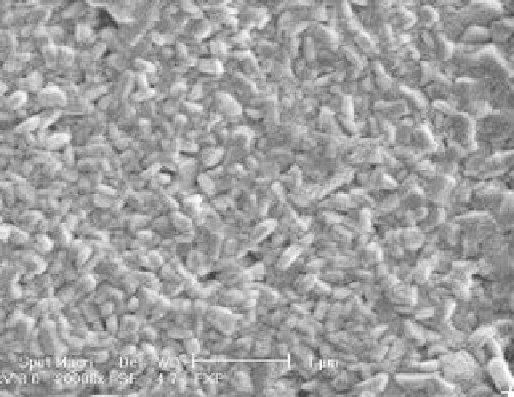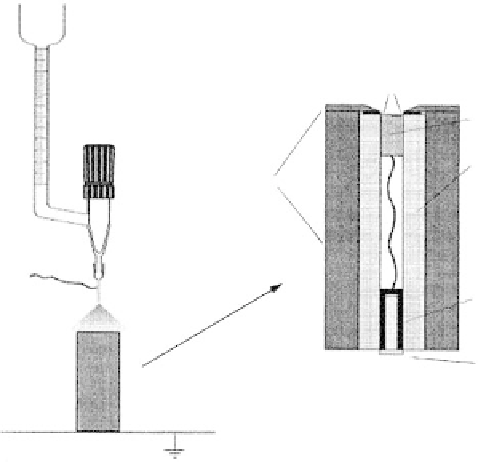Biomedical Engineering Reference
In-Depth Information
FIGURE 11.22
SEM of hydroxyapatite (HAP) fi lms deposited using electrospraying at 80°C. (Reprinted
from Kim, B.H., 33, 119, 2007. © Elsevier Science. With permission.)
(a)
(b)
Metal foil masking ring
Glassy carbon
Brass lid
and housing
Teflon electrode
body
High
voltage
Thread
Screw connected
to ground
FIGURE 11.23
A schematic diagram of electrospraying coating setup (a) and cross-section of electrode (b).
(Reprinted from Hoyer, B. et al.,
Anal. Chem.
, 68, 3840, 1996. © American Chemical Society. With permission.)
11.2.8.2.2
Biopolymer Materials
Hoyer et al. deposited biological cellulose acetate (CA) membranes on carbon electrodes using
electrospraying [74]. The spraying solution consisted of 20 g of acetone, 0.250 mL of pore-former
solution, and 0.05 g of CA. The purpose of the CA membrane prepared by electrospraying was to
prevent fouling of the electrode surface by discriminating against macromolecular species, which
often cause severe absorption interferences when complex samples are analyzed by electrochemical
methods. The schematic diagram of an electrospraying apparatus for preparing CA coating is shown
in Figure 11.23. The precursor was fed to the needle from a grounded glass capillary with a screw-
type Tefl on stopcock whose tip was conical-shaped to allow easy pressure mounting of standard



